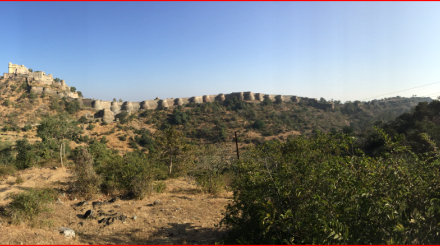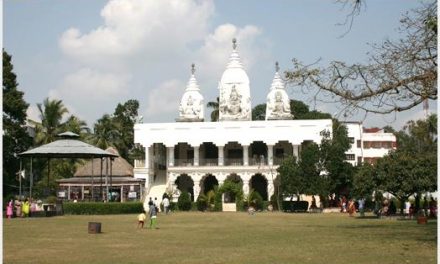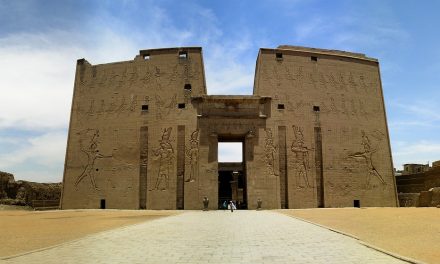Tenure from the 4th century CE to the close of the 8th century was most crucial for Indian education history under the reign of the Guptas, the ruler Harshavardhana of Kanauj and their successors. This period had been focused on the page of Indian history widely for several universities and monasteries of India. All those temples of education uplifted and upgraded Indian sciences, astronomy, mathematics, logic, philosophy and other aspects of education and culture. Those universities enriched Indian education. The rest of the world education had been enlighted by their numerous branches of education. The Nalanda University located at Rajgir in Patna had claimed its feat among all the remarkable fanes of education of India during the 5th to 12th centuries CE through its optimum quality procedure of teaching, a vast number of scholar-teachers(almost two thousand), and for a vast number of meritorious learners(nearly ten thousand) not only of Indian but also from the other parts of the world. They were compiled with revenues from more than 100 villages. Out of all the teachers, more than 1500 involved themselves constantly in researching many interesting branches of education and had to do with more than 100 different theses every day. The subjects under footlights of discussion of the scholars were Vedas, logic, grammar, Buddhist and Hindu philosophy(Sankhya, Nyaya, and so many), astronomy and medicine. Contemporarily Indian sciences, mathematics and astronomy had witnessed remarkable innovations that made India glorious in the world.
In the late 5th century, Aryabhatta was the greatest mathematician of India who made the world familiar with the concepts of zero and decimals. Another scholar of India, Varahamihira, earned vivid knowledge in botany, astronomy, military science, and civil engineering. Medical science also proved itself with its incredible advances of that time. In India, medical science had more than eight branches, including surgery and paediatrics, which the physicians practised. A well known Chinese Buddhist pilgrim, Xuangzang(Hieun Tsang), came to India during the reign of King Harshavardhana of Kanauj in 630 AD, spent fifteen years, attained knowledge in Hinayana, Mahayana Buddhism and memorised a clear account of the subjects studied in various monasteries including Nalanda and of the general features of the community in his itinerary ‘si-yu-ki’. Another renowned Chinese pilgrim and a student of Nalanda University, Yijing(I-tsing), had memorised his valuable doctrines of the life of the monks. Gradually this holy place of education, Nalanda, stepped to proceed to prosperity as a centre of learning under the rule of the Pala dynasty between the 8th to12th centuries CE. The Nalanda University attained its crown as a postgraduate, research-intensive and international university by the participating countries of the East Asia summit. The day of 25th November 2010 was as historical, as memorable in favour of this university due to a special act of the Indian Parliament denominated it as an ‘Institution of national importance.’ So, it is acknowledged by all that Nalanda University played an important role as an icon of the new Asian renaissance with the help of every branch of education and culture. This renowned university had accommodated all of its teachers and pupils inside its premises. Constructional characteristics of the Nalanda University were served in several itineraries written by a couple of pilgrims, entitled themselves to that university. According to those itineraries, the Nalanda University had enclosed all its monasteries by an alpine wall and a big entrance. The monasteries had kept the artefacts of the traditional Indian architecture of rectangular brick structures with cells opening onto four sides of a courtyard. All the monasteries are faced with a row of larger fanes or stupas, covered with bricks and plaster. Apart from all the fanes and stupas, many viharas(educational and residential buildings), compounds, classrooms and meditation halls, parks and lakes adorned the entire complex ground. This historical, educational mecca of ancient India and a large part of the world was erected by the Gupta Emperor, King Kumaragupta(I), in the 5th century CE on a land of 30 acres with the width of 490mitres(1,600feet) and with a length of 240mitres(800feet).

An Archaeological Museum has been ornamented with the remnants of Nalanda’s primitives. This fascinating museum is open for visitors from Saturday to Thursday every week between 9 a.m. to 5 p.m. It was denominated as a UNESCO World Heritage Site in the year 2016. It is an amazement that this heritage of ancient India was blessed repeatedly by the god of Buddhism, the Lord Buddha himself. The Nalanda University will be incomplete without mentioning Atish Dipankar, the name who was entitled inseparably to that milestone of education and culture of ancient India. At 19, he was inducted formally as a monk and known as ‘Dipankar Srigyan’. After then he moved to Nalanda Mahavihara. After a decade, he was ordained as a full monk by Acharya Shilarakshita(the chancellor and an eminent scholar at Odantapuri Mahavihara in Magadha). He became familiar as Atish Dipankar Srigyan(glorious wisdom source of light) due to his excellent knowledge and wisdom. In 1024 AD, King Mahipala(I) of the Pala dynasty promoted Atish Dipankar Srigyan as the chancellor of the Buddhist university, ‘Vikramshila’ in Bhagalpur District in the present state of Bihar of the Indian subcontinent. Atish Dipankar Srigyan established himself to the world as one of the most significant figures of classical Buddhism. He was a favourite pupil of the Nalanda University and later became a preeminent teacher. Subsequently, he was attached to the universities such as Vajrasana(Bodh Gaya), Sompura and Pandita. He proclaimed Buddhism in Southeast Asia, Sri Lanka, South India, Nepal, and Tibet. His spreading of Buddhism and scholarly teaching earned him the epithet of the title ‘Dhammapala’. From the Vikramshila University, he stepped for Tibet at the invitation of the Tibetan king in the year 1040 AD, where Buddhism was almost in decline. He spent the rest of his life in Tibet translating, writing, and compiling Buddhist texts and passed away in 1054 AD at the age of 74(on the heresy of 72 or 71 years).
Another Buddhist monk and philosopher, Shilbhadra, became familiar with being an abbess of Nalanda, being an expert on Yogachara teachings and being a personal tutor of the Chinese Buddhist monk Xuangzang(Hieun Tsang).
The demise of Nalanda University
History testifies in its pages that the Nalanda University was destroyed three times by Invaders but restored only twice. The first time it was attacked and destroyed by the Huns under Mihirkula during the reign of Skandagupta(455-467 AD), but his successors rebuilt it. Next time it was damaged again by the Gaudas in the early 7th century. Fortunately, this destruction was again recouped by king Harshavardhana(606-648 AD). Nalanda faced its last and final invasion by an army of the Mamluk Dynasty of the Delhi Sultanate under Bakhtiyar Khalji, a general of Qutubuddin Aibak. The Turkish hoard of barbarians was in afire of destruction and demolished the giant library of Nalanda University it was none other than Bakhtiyar Khalji who destroyed the Nalanda University.
Current Govt of India initiative
This area belongs to an intolerable weather condition being in the Gangetic plains; it is better to plan for a trip to Nalanda in winter. It is unfortunate for not being a direct communication from Kolkata to Nalanda. There are several modes of communication to reach Nalanda from Kolkata. The cheapest way to go Nalanda is the bus from Kolkata to Bihar Sharif. From there, the train takes you to Nalanda within 16hrs and 28 minutes. The fastest mode of reaching from Kolkata to Nalanda is to avail the airline which lands you at Jay Prakash Narayan International Airport from Kolkata. This airport is distant by 89kms from Nalanda. So, you have to hire a cab from there to reach Nalanda. You have to allot 4hrs and 4minutes of your precious time for this total journey. There are several express trains from Howrah to touch Nalanda. Among them (1) Kolkata to Rajgir(RGD) fastest 53043 Passenger train departs HWH at 11:10:00 and reaches Rajgir at 10:55:00 and takes 23hrs 45 minutes to cover the distances of 660 km. This train plies every day of the week.
(2) 12371 HWH Jaisalmer Super Fast Express departs Howrah at 08:15 every Sunday. You have to stop your train journey at Gaya Junction at 14:50(Monday) for a trip of 6hrs and 35 minutes.
(3) 12381 Poorva Express departs Howrah at 08:15 on (Sunday, Wednesday and Thursday). It reaches Gaya Junction at 14:50 for a journey of 6hrs and 35 minutes.
If you intend to spend a couple of days at Nalanda, you must base at Rajgir, where several hotels are waiting to serve you. Among them, some are as follows:
(1) Hotel Nageshwar Palace, Rajgir. (2) Gargee Gautam Vihar Resort, Rajgir. (3) Indo Hokke Hotel. (4) Hotel Abhilasha. (5) Hotel Vijay Niketan.
At last, our earnest request to our central government and the state government of Bihar to take care of this history-famed educational institution and focus it continuously to revive its missing fame.
Image courtesy: ASI | Alexander E Caddy
















